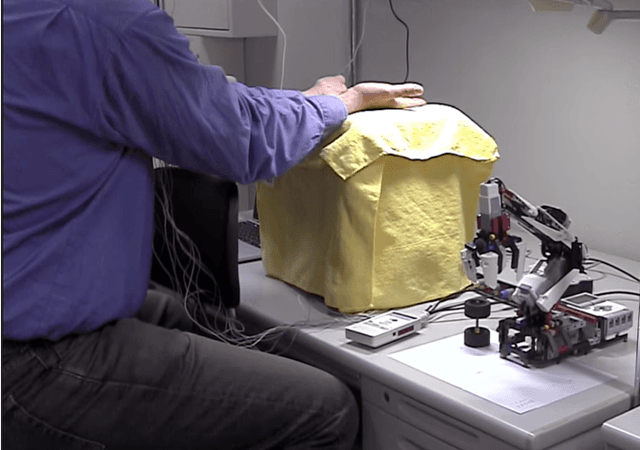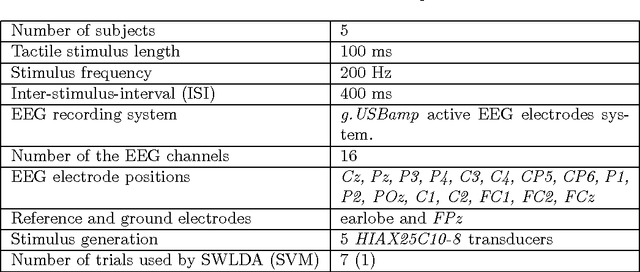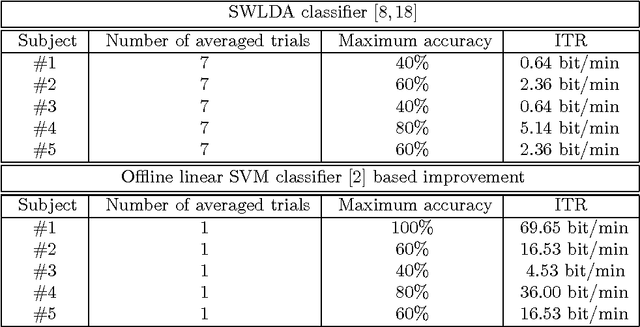Hiromu Mori
Airborne Ultrasonic Tactile Display Brain-computer Interface -- A Small Robotic Arm Online Control Study
Jan 30, 2015
Abstract:We report on an extended robot control application of a contact-less and airborne ultrasonic tactile display (AUTD) stimulus-based brain-computer interface (BCI) paradigm, which received last year The Annual BCI Research Award 2014. In the award winning human communication augmentation paradigm the six palm positions are used to evoke somatosensory brain responses, in order to define a novel contactless tactile BCI. An example application of a small robot management is also presented in which the users control a small robot online.
Multi-command Chest Tactile Brain Computer Interface for Small Vehicle Robot Navigation
Jul 28, 2013



Abstract:The presented study explores the extent to which tactile stimuli delivered to five chest positions of a healthy user can serve as a platform for a brain computer interface (BCI) that could be used in an interactive application such as robotic vehicle operation. The five chest locations are used to evoke tactile brain potential responses, thus defining a tactile brain computer interface (tBCI). Experimental results with five subjects performing online tBCI provide a validation of the chest location tBCI paradigm, while the feasibility of the concept is illuminated through information-transfer rates. Additionally an offline classification improvement with a linear SVM classifier is presented through the case study.
 Add to Chrome
Add to Chrome Add to Firefox
Add to Firefox Add to Edge
Add to Edge